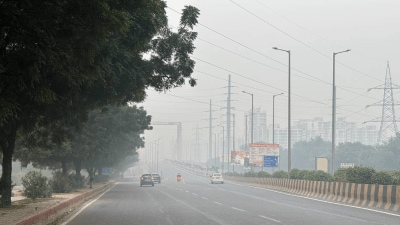Life and death held in balance
Dhananjoy Chatterjee is executed and gone. His execution should not mean that we forget the larger question of whether we should retain the ...

Dhananjoy Chatterjee is executed and gone. His execution should not mean that we forget the larger question of whether we should retain the death penalty.
Over the last 36 years — up to December ’01— the number of abolitionist nations has grown from 25 to 89. The European Union, which has abolished the death penalty, has urged India to refrain from carrying out more executions. India is one of the few states in the world to have retained the death penalty for murder. In ’80, the Supreme Court in Bachan Singh’s case — in a majority verdict with Justice P.N. Bhagwati expressing powerful dissent — held that the death penalty for murder was constitutional.
Today, 24 years later, the Supreme Court should revisit the legality of the death penalty. All the more so since Parliament has not responded to the issue. A great deal of humanist jurisprudence of other countries and of the Supreme Court itself has developed since then, which was not available in ’80 to those whom the Court described as “kindly social research workers”. For instance, in ’95, the South African Supreme Court, in a landmark decision, declared the death penalty as incompatible with a human rights culture.
The strongest reason for the abolition of the death penalty is the fault of arbitrariness in sentencing judges. It is they who choose between death and lesser punishment and this choice has remained — and will at all times remain — subjective, arbitrary and discriminatory. Our apex court has said that the death penalty ought not to be imposed except in the “rarest of rare cases”. Pronouncing these four words has become a ritualistic mantra before the death penalty is pronounced by the judge. They have masked the arbitrary choice of the sentencing judge and lulled us into a complacent belief that the sentencing judge has made the right choice between life and death.
Yet, the gamble between death and life remains. We may ask how does one distinguish between an ordinary murder and a “rare” murder, and among “rare” murders how does one find the double distilled essence of “the rarest” murder. It does not help to describe a murder as brutal, grotesque, heinous, and so on, as judges invariably do. An ordinary person could fairly so characterise every murder. Ultimately judges award death penalty or life depending on their own sensitivity and value system. Each judge will easily find “special reasons” for awarding the death sentence according to his own perception of the gravity of the murder.
This was dramatically demonstrated in a case in the Supreme Court itself in 1981. Jeeta Singh, Kashmira Singh and Harbans Singh had all played an equal part in the ghastly murder of a family. Because separate petitions were made to the Supreme Court by each of the convicts, one bench of judges of the Supreme Court rejected the first petition of Jeeta Singh who was later executed. Kashmira Singh’s petition was heard by a different bench of judges which commuted his sentence to life imprisonment. On the eve of his execution, Harbans Singh’s petition came before yet another bench of Supreme Court judges, who when coming to know of Kashmira Singh’s case, directed that the case should be sent back to the president for reconsideration of his clemency petition. As Justice Bhagwati has said “This is a classic case which illustrates the judicial vagaries in the imposition of death penalty.”
In Mohammed Chaman’s case, the accused had raped and killed a girl, aged one and a half. The Supreme Court, while describing the crime as “undoubtedly heinous and reprehensible” took a “humanist approach” and changed the sentence of death to life imprisonment. Four days, after the execution of Dhananjoy Chatterjee, the Supreme Court commuted the sentence of death imposed on one Rahul who had raped a four-year-old girl and then slit her throat. The same day a sessions judge in Ahmedabad sentenced one Kishan Marvadi to death for the killing and rape of a schoolgirl of six years describing the murder as “heinous and devilish”.
Each of these crimes are revolting to an ordinary mind. But a convict sentenced to death may well say why me and not him who escaped with a lesser punishment. Judicial discretion exercised in ordinary matters one way or the other, even if faulted, is understandable and must be accepted. But a matter of life and death cannot be excused in the same way. This led one of the greatest American judges, Justice Blackmum, to say: “the death penalty experiment has failed in the US” although 20 years earlier he had voted in the US Supreme Court to uphold the death penalty.
Besides the inherent arbitrariness of the death penalty, Indian conditions for investigation of crimes and trial court procedures in homicide cases do not inspire confidence. Methods of investigation remain crude, archaic and unscientific. Conviction is largely based on oral evidence of witnesses. Witnesses are often motivated by caste, communal and factional factors. It is not uncommon for the police to fabricate a case for caste or communal reasons or for the accused’s enemies to fabricate a case against him. Prosecutors are not trained to shun irrelevant considerations. Such factors may create an apparent cast-iron prosecution case but the reality may be different — an innocent man may have been victim of a faulty or false prosecution.
The Indian experience is that almost invariably the death sentence is given to the accused from society’s poor and disadvantaged sections. It seems the death sentence is the privilege of the poor. One does not come across any case of the death penalty being inflicted on those who are better off and who can afford to engage skilled lawyers. Often the accused is defended by a novice who holds a legal aid brief. What Justice Douglas said in the US has application with even greater force in India. He said,”It is the poor, the sick, the ignorant, the powerless and hated who are executed. ”
All these considerations must weigh against the consolation which sensitive persons in India have derived from accepting the facile “rarest of rare case” formula. At heart, the problem remains that the award of the death penalty is inherently arbitrary, discriminatory and even freakish.
The writer is a senior advocate and a former solicitor general of India



- 01
- 02
- 03
- 04
- 05




























